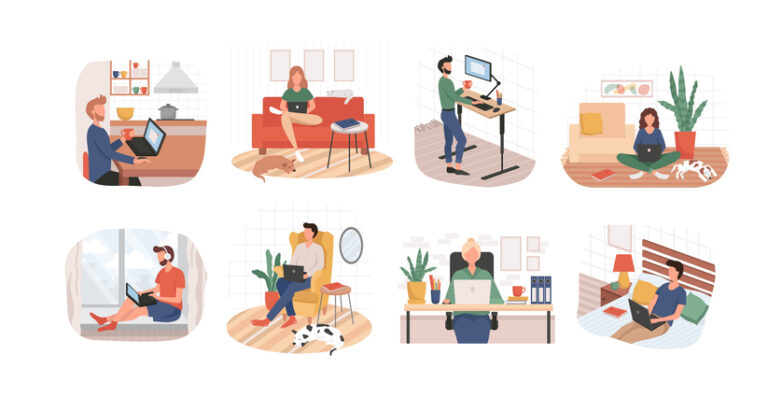As we are well into the 2024 year, the debate over the optimal working model continues to evolve. The COVID-19 pandemic reshaped traditional work structures, leading many organisations to embrace remote and hybrid setups. Now, as we navigate a post-pandemic landscape, business and employees alike are grappling with the decisions regarding remote work, hybrid arrangements or a return to full time office-based work.
At Konnexus with work with a broad range of organisations all with their own working models. We also work with candidates daily who all have their own idea of what they want their working models to be.
Let us look a bit further into this complex topic by firstly taking a quick overview of the key working models as they currently exist.
- Remote work gained widespread popularity but also acceptance over the past few years, offering flexibility and autonomy to employees while reducing overhead costs to employers. Remote working allows employees to work from anywhere, eliminating the need for a daily commute and offering a better work-life balance. It has also opened the opportunity for hiring talent from diverse geographic locations. Remote work can also lead to feelings of isolation, communication challenges, and difficulty separating work and personal life.
- Hybrid work models combine elements of remote and office-based work, allowing employees to split their time between working remotely and in the office. The model offers the flexibility of remote work while still providing opportunities for in-person collaboration and connection. Hybrid work can help maintain company culture, foster team cohesion, and support employee well-being. Hybrid workforces can require careful planning and communicate to ensure equal treatment for all employees and effective collaboration across different locations.
- Full time office-based work is being adopted again by some organisations who believe that in-person collaboration is essential for creativity, innovation and team dynamics. Full time office-based work allows for spontaneous interactions, face to face meetings, and a sense of belonging to a physical workplace. However, it can also lead to longer commutes, higher costs for employees and a lack of flexibility compared to the remote or hybrid arrangements.
Give these different types of working models, how do organisations and their employees navigate this complex landscape of remote, hybrid and full-time office-based work.
Consider this:
- Embrace flexibility and adaptability in your approach to the working model. Recognise that one size does not fit all and be open to experimenting with different arrangements to find what works best for your orgnaisation and team.
- Prioritise clear and transparent communication to keep employees informed about changes to the working model and to address any concerns or challenges that may arise. Invest in technology and tools that facilitate collaboration and connection across remote and in-office teams.
- Consider the impact of the working model on employees well being and mental health. Offer resources and support to help employees manage stress, maintain work-life balance, and stay connect with colleagues, regardless of their location.
- Rethink performance management strategies and focus on outcomes rather than hours worked. Set clear expectations and goals for remote, hybrid and office-based employees alike and evaluation performance based on results rather than presence in the office
- Stay agile and responsive to changing circumstances, market conditions and employee preferences. Continuously gather feedback from employees and adjust the working model as needed to ensure it aligns with the volving needs of your organisation.
In 2024, the debate over the most effective working model continues to evolve. Each model offers it own set of benefits and challenges and there are no size fits all solution. Flexibility, prioritising communication, and collaboration and supporting employee wellbeing, rethink performance management and staying agile, are keyways that organisations and employees can navigate this complex landscape and build a sustainable and successful future of work.






